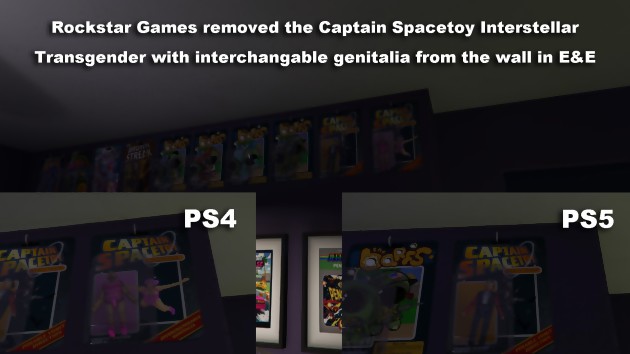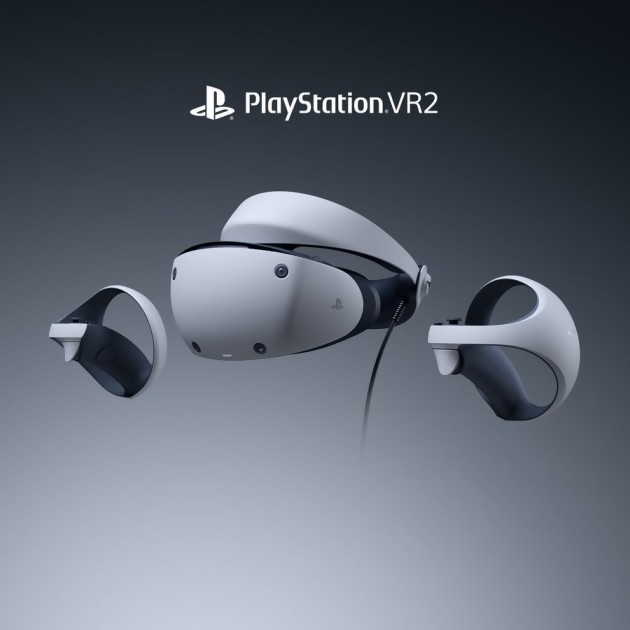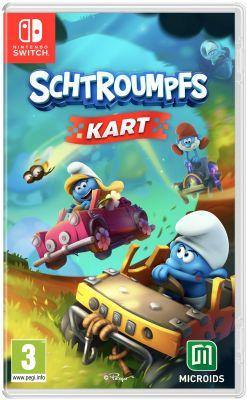 If the storyline of the game takes place about a year after the events of Borderlands 3 and if we find the hero of Tales from the Borderlands Rhys Strongfork (who was also present in Borderlands 3) as a secondary character, he does not It's actually not necessary to have read these two titles to appreciate New Tales from the Borderlands. A simple general knowledge of the franchise created in 2009 by Gearbox Software is enough to find its marks and appreciate most of the references. The universe is also perfectly respected and used by this new adventure. The introduction takes up the principle of the story told by Marcus and illustrated by great drawings, each important character newly crossed is presented to us using a freeze frame on a colored background, there are small safes housing wads of cash in the sets, and the story does not hesitate to refer to many cult characters (the aforementioned Rhys, the mermaid Lilith, Handsome Jack…). Specialists will be delighted, and new players will not be lost because the heroes that we embody are completely new. They are Anuradha Dhar, Octavio Wallace-Dhar and Francine Miscowicz. More commonly known as Anu, the former is an inventor who, unlike her employer Atlas, seeks pacifist solutions to all problems. Which will also lead him to be fired by the weapon manufacturer during the first minutes of the game. His brother Octavio is a low-level thief, who wishes to become as famous as the Vault Hunters and also richer than the bosses of the biggest corporations. For the time being, he is mostly the employee of Fran, whose status as the best yogurt ice cream seller is helping due to the near-destruction of her restaurant following Maliwan's attack on the planet Prometheus. Obviously, the scenario will very quickly bring together these three "losers", and alternately give us control of one or the other.
If the storyline of the game takes place about a year after the events of Borderlands 3 and if we find the hero of Tales from the Borderlands Rhys Strongfork (who was also present in Borderlands 3) as a secondary character, he does not It's actually not necessary to have read these two titles to appreciate New Tales from the Borderlands. A simple general knowledge of the franchise created in 2009 by Gearbox Software is enough to find its marks and appreciate most of the references. The universe is also perfectly respected and used by this new adventure. The introduction takes up the principle of the story told by Marcus and illustrated by great drawings, each important character newly crossed is presented to us using a freeze frame on a colored background, there are small safes housing wads of cash in the sets, and the story does not hesitate to refer to many cult characters (the aforementioned Rhys, the mermaid Lilith, Handsome Jack…). Specialists will be delighted, and new players will not be lost because the heroes that we embody are completely new. They are Anuradha Dhar, Octavio Wallace-Dhar and Francine Miscowicz. More commonly known as Anu, the former is an inventor who, unlike her employer Atlas, seeks pacifist solutions to all problems. Which will also lead him to be fired by the weapon manufacturer during the first minutes of the game. His brother Octavio is a low-level thief, who wishes to become as famous as the Vault Hunters and also richer than the bosses of the biggest corporations. For the time being, he is mostly the employee of Fran, whose status as the best yogurt ice cream seller is helping due to the near-destruction of her restaurant following Maliwan's attack on the planet Prometheus. Obviously, the scenario will very quickly bring together these three "losers", and alternately give us control of one or the other.
"SPECTATOR OF DESPAIR"
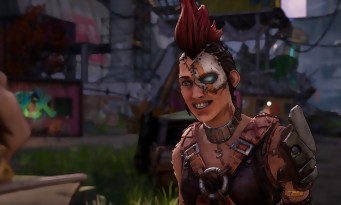 "Control" remains a very big word, however, since the sequences where the character and the camera are directed directly in order to search the sets are not so numerous in the end. They still offer us the opportunity to use the gadgets specific to each hero. Anu has hi-tech glasses allowing him to analyze certain objects in more detail, Octavio has a wristband-smartphone equipped with hacking applications, and Fran rests permanently on a floating chair with offensive capabilities. But most of the gameplay still resides in the numerous multiple-choice dialogues, the more important and rarer dilemmas, and in the execution of reflex actions that are never very difficult. The game also tries to innovate on this last point by introducing a warning icon that appears on the screen just before each QTE. But this system seems more disabling to us than anything else. It has happened to us several times to confuse this icon with that of an order to be carried out, and therefore to stupidly miss the QTE because of it. Fortunately it is possible (and recommended) to deactivate this new feature in the options.
"Control" remains a very big word, however, since the sequences where the character and the camera are directed directly in order to search the sets are not so numerous in the end. They still offer us the opportunity to use the gadgets specific to each hero. Anu has hi-tech glasses allowing him to analyze certain objects in more detail, Octavio has a wristband-smartphone equipped with hacking applications, and Fran rests permanently on a floating chair with offensive capabilities. But most of the gameplay still resides in the numerous multiple-choice dialogues, the more important and rarer dilemmas, and in the execution of reflex actions that are never very difficult. The game also tries to innovate on this last point by introducing a warning icon that appears on the screen just before each QTE. But this system seems more disabling to us than anything else. It has happened to us several times to confuse this icon with that of an order to be carried out, and therefore to stupidly miss the QTE because of it. Fortunately it is possible (and recommended) to deactivate this new feature in the options.
But most of the gameplay still resides in the numerous multiple-choice dialogues, the more important and rarer dilemmas, and in the execution of reflex actions that are never very difficult.
 Another novelty, welcome this time, is offered to us through the ArchiiBôs mini-game. These are plastic figurines to unearth in the sets and to use during confrontations that are unfortunately a little too simplistic. These toy fights are indeed resolved in a few seconds, by simple QTE. We would have preferred a more fleshed out system of stats and abilities, possibly turn-based. But it remains pleasant to seek to collect all the figurines. Just as it is pleasant after each episode to be able to compare our decisions with those made by the majority of players, in the great tradition of the genre. Make no mistake about it, the game is sold out of the box (so much the better) and therefore cannot really be described as an episodic adventure. But it remains divided into chapters, for reasons of rhythm and precisely to allow the display of these famous percentages.
Another novelty, welcome this time, is offered to us through the ArchiiBôs mini-game. These are plastic figurines to unearth in the sets and to use during confrontations that are unfortunately a little too simplistic. These toy fights are indeed resolved in a few seconds, by simple QTE. We would have preferred a more fleshed out system of stats and abilities, possibly turn-based. But it remains pleasant to seek to collect all the figurines. Just as it is pleasant after each episode to be able to compare our decisions with those made by the majority of players, in the great tradition of the genre. Make no mistake about it, the game is sold out of the box (so much the better) and therefore cannot really be described as an episodic adventure. But it remains divided into chapters, for reasons of rhythm and precisely to allow the display of these famous percentages.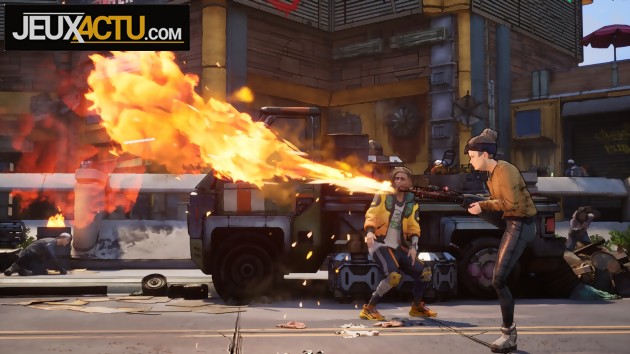
GOOD FOR THE EYES AND FOR THE EARS
 If the fact of not having to wait between each episode is good, the adventure has other qualities that are even more important. This is the case with the gallery of characters, who are all more barred than each other. Not only are our three anti-heroes really not lacking in character, but even the secondary interlocutors are memorable. Special mentions to L0U13 the robot-assassin as funny as it is classy, Agrafine the very special sadist, Radon the lisping dwarf, and Brock the talking weapon. We were also very pleasantly surprised by the graphics, which take on the typical cel-shaded style of Borderlands, but manage to sublimate it thanks to very realistic animations and facial expressions. There is definitely motion capture and performance capture down there! But this mixture of techniques works well and results in a half-cartoon half-realistic effect that is very aesthetic and never falls into the disturbing valley. The humor and the writing are also rather successful, even if we do not escape a few failed lines. And the French version is downright worthy of the highest praise. The localization is clever (the name ArchiiBô in reference to Nintendo's Amiibo, for example) and, above all, the French dubbing always sounds accurate and extremely professional. This greatly helps to appreciate the many moments when one is more a spectator than a player...
If the fact of not having to wait between each episode is good, the adventure has other qualities that are even more important. This is the case with the gallery of characters, who are all more barred than each other. Not only are our three anti-heroes really not lacking in character, but even the secondary interlocutors are memorable. Special mentions to L0U13 the robot-assassin as funny as it is classy, Agrafine the very special sadist, Radon the lisping dwarf, and Brock the talking weapon. We were also very pleasantly surprised by the graphics, which take on the typical cel-shaded style of Borderlands, but manage to sublimate it thanks to very realistic animations and facial expressions. There is definitely motion capture and performance capture down there! But this mixture of techniques works well and results in a half-cartoon half-realistic effect that is very aesthetic and never falls into the disturbing valley. The humor and the writing are also rather successful, even if we do not escape a few failed lines. And the French version is downright worthy of the highest praise. The localization is clever (the name ArchiiBô in reference to Nintendo's Amiibo, for example) and, above all, the French dubbing always sounds accurate and extremely professional. This greatly helps to appreciate the many moments when one is more a spectator than a player...




